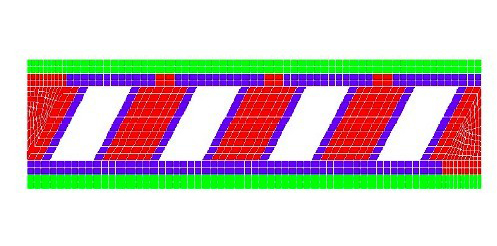原文作者: | G. F. Hawkins, M. J. O'Brien, R. J. Zaldivar, H. F. Von Bremen, and J. N. Schurr |  |
发布时间: | 2014-08-15 | |
来 源: | AEROSPACE REPORT | |
下载链接: |
Abstract
Machine-Augmented Composites Materials (MACterials) are composites that contain many, small, embedded simple machines. Due to the presence of these embedded machines, these composites have properties that cannot be obtained by other means. During this program, we have developed a comprehensive understanding of machineaugmented composite materials to learn how they can be used in infrastructure applications. Manufacturing methods were developed to embed machines of various sizes in a matrix material. Experiments with embedded Z-shaped machines showed how the material converts compressive displacements into shear displacements with an efficiency ranging from 0.5/1 to 2/1, depending on the geometry of the machines.Experiments were conducted measuring the force conversion efficiency with much the same results. This material may have applications in cable stays and in prestressing composites in retrofit situations.
We also developed both analytical and finite-element models to allow us to design materials with custom properties using embedded machines. These models were validated with experimental tests. Using the validated models, we designed machines that contained a viscous fluid for use in a material that could be used as a vibration damper. The results also predicted that there would be an optimum viscosity for obtaining efficient damping. Experiments were performed to verify this finding. In addition, we optimized the design of the fluid-filled machine using an hourglass shape. Calculations show that this shape is much more efficient at moving fluids under small displacements. Samples of a material that could be used to damp vibrations during earthquakes were successfully tested.
The goals of this task -- developing the analytical tools and manufacturing methods for using machine-augmented composite materials in infrastructure applications -- have been successfully achieved.